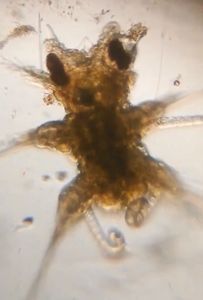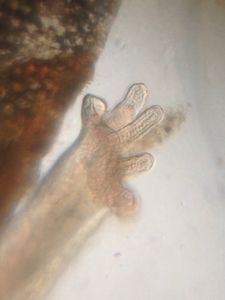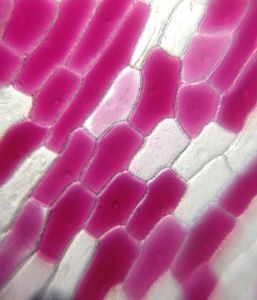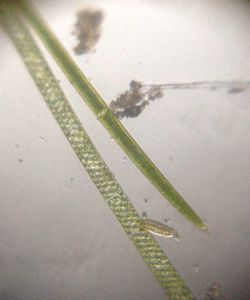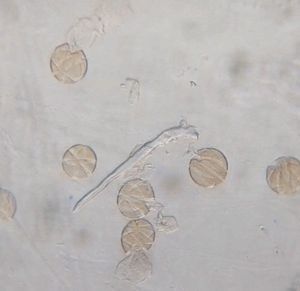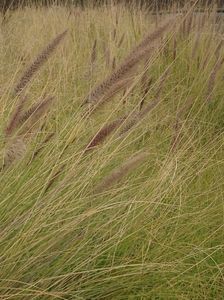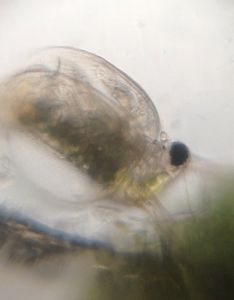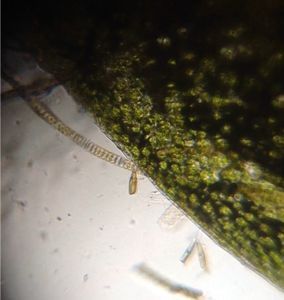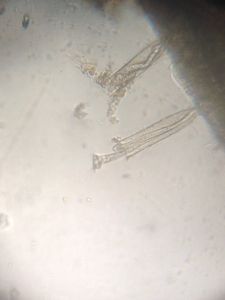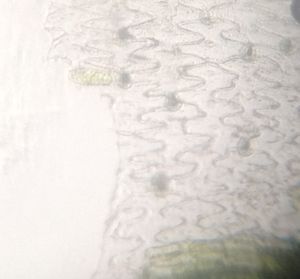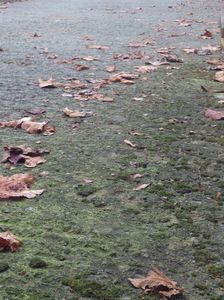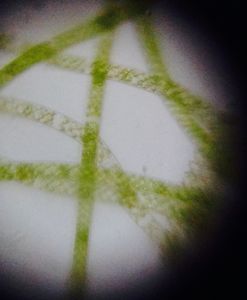Carbon dioxide sinks
 Dec 30, 2017 • 6:25 PM UTC
Dec 30, 2017 • 6:25 PM UTC Unknown Location
Unknown Location 140x Magnification
140x Magnification Microorganisms
Microorganisms
Cristina
Learn about the author...
19posts
52comments
1locations

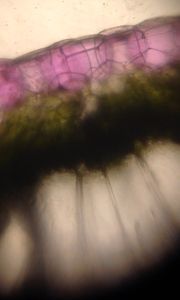
Yesterday, whilst I was strolling in my city , I found some spiderwort species growing vigorously nearby and instantly
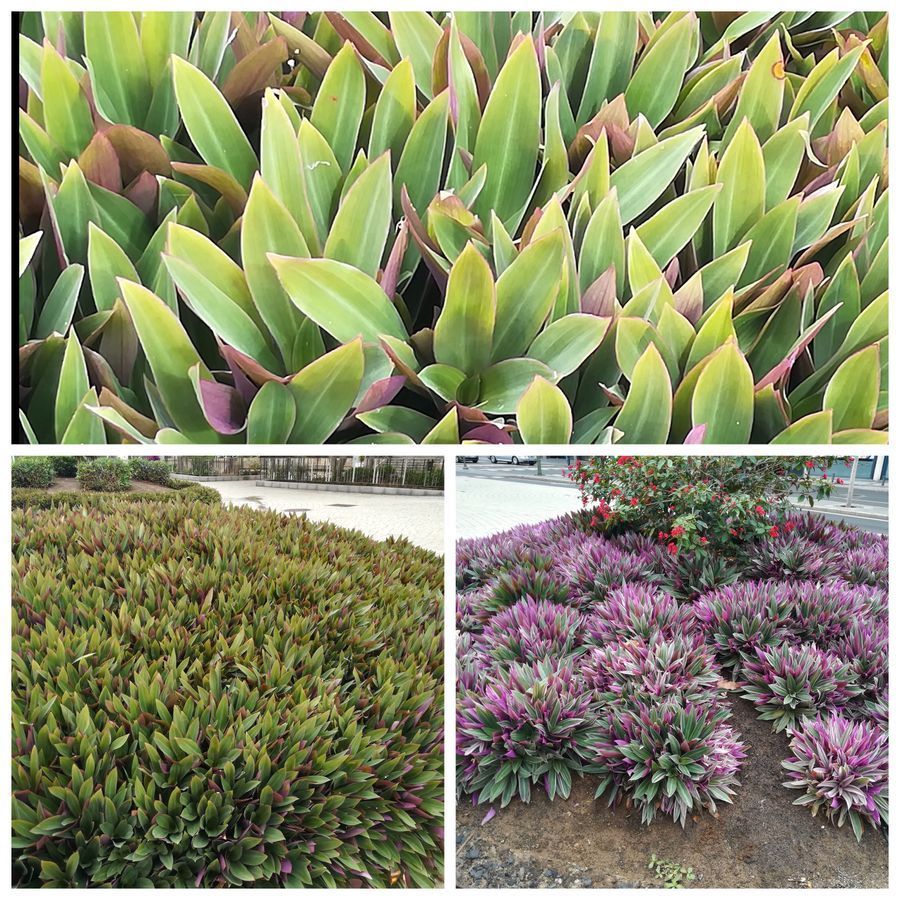
reminded that once, in a past microcosmos post, I had read it was an ideal candidate to observe meiosis. As it is obvious, my plan will have to wait until it begins to blossom but, in the meantime, I felt curious about its colourful leaves. After grabbing some of them ( 😇😇 , feeling a little bit guilty but knowing it was worth doing it 🔬😉 ), and when I got back home, I got my Foldscope and began solving this new inquiry. This is what I saw: epidermal cells and beautiful stomata amongst them. To my surprise, some (four?) subsidiary cells sorround the two guard cells that make an stomata, a fact I did not know before this observation.
I hope you can distinguish the vast array of chloroplasts inside the guard cells. Nevertheless, I decided to try with the high magnification lens and see what I was so lucky to watch!
The guard cells bulge and control the aperture between them (in black).
I wanted to better distinguish each cell using a blue food dye, but it was not useful.
Finally, I decided to try a very thin “loaf” of one leaf in my Foldscope, and saw this absolutely amazing scaffolding of cells .
This arrangement lets them funtion as living factories of the mollecules of life. In this orchestra of cells, stomata act as carbon dioxide sinks. A lot to think about this!
Happy new year and thanks for reading!
Cristina Bosch
Happy new year and thanks for reading!
Cristina Bosch
Sign in to commentNobody has commented yet... Share your thoughts with the author and start the discussion!

 0 Applause
0 Applause 0 Comments
0 Comments

